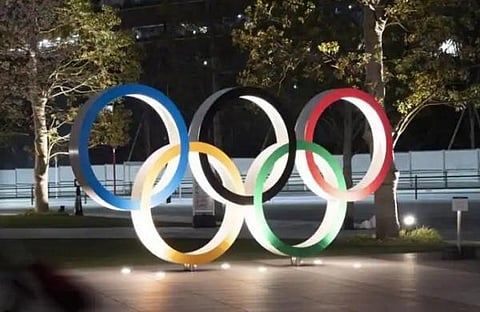

Going by six medals won at the London Olympics, anything short of five medals this time would be considered mediocre. Though the number of athletes may be a trifle less than at the Rio Olympics in Brazil, expectations on them this time are unmatched. Especially in traditionally strong sports like shooting, wrestling, boxing, badminton and weightlifting. Amid the hope and hoopla, we should not forget those path-breaking sports in which India qualified this time. These are a bunch of esoteric but intrepid athletes who had dared to not only dream but convert it into a reality.
Take, for instance, sailing. April 7 and 8, 2021. Three men—sailors Vishnu Saravanan, Varun Thakkar and KC Ganapathy—were sailing in the waters of Oman to qualify. Nethra Kumanan was the sole Indian woman in the race for the Olympics. There was a sudden buzz on social media followed by some reports of Nethra qualifying on April 7 itself. She officially qualified the next day as she had to complete her race. Frenetic searches and questions on what kind of boat to what class these sailors would qualify in were doing the rounds. The four became the first Indian sailors to qualify for the Olympics. This encapsulates the ignorance of lesser-known sports too.
When Bhavani Devi qualified, we suddenly got interested in the sabre she uses during her competitions. Equestrian exponent Fouaad Mirza’s million-dollar horses became the talk of all sports pages for a while.
On the flipside, it does augur well. As Saravanan surmised it succinctly during a recent interaction. “We need to tap our long coastline and help popularise the sport. It has a huge potential.” In fact, until they qualified, not too many people knew that it’s a sport that can be pursued by anybody. Ganapathy and Thakkar trained in Chennai Port, while Kumanan moved to Spain with the help of sponsors. And according to them, the warm waters of India are always better than in Europe. “But they sail fast and that’s why we have to train with them,” says Ganapathy. Like Kumanan puts it, “The Olympics is going to be a learning experience.”
Devi qualified on the basis of her ranking in a sport she took up during her school days. Despite initial struggles— both financially and training—she managed to excel with the help of senior players and a foreign coach. The Tamil Nadu government supported her through their scheme for elite sportspersons (`25 lakh a year). She may not win a medal, but will definitely heighten the interest in fencing.
In addition to the new disciplines, there are quite a few teenagers in the Indian contingent. Women wrestlers Sonam Malik and Anshu Malik, shooters Saurabh Chaudhury, Manu Bhaker and Divyansh Singh Panwar, and a couple of women hockey players. There are also a few in their early 20s like wrestler Ravi Dahiya and boxer Lovlina Borgohain. Though tough to predict, with age on their side, they can prosper in the next Olympics.
Things have changed over the years. With every team there is a physio, masseur and a mental-trainer. Like IOA president Narinder Batra said, this time there was very close coordination between the government, the IOA and the NSFs. The ministry has spent close to Rs 1,100 crore in the last Olympic cycle on these 18 disciplines. Good result in Tokyo is crucial for taking this newfound interest in Olympic sports forward.